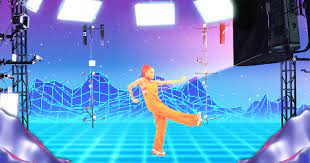Volumetric capture, also known as 3D capture or spatial capture, is a technique used to capture the three-dimensional shape, appearance, and movements of objects or people in real-time. It involves the use of specialized hardware and software to create a digital representation of a physical scene or environment.
One of the main applications of volumetric capture is in the entertainment industry, where it is used to create realistic 3D models and animations for movies, video games, and virtual reality (VR) experiences. Volumetric video capture can also be used in other fields, such as medicine, architecture, and engineering, to create detailed 3D models of objects or environments for various purposes, such as training simulations, virtual tours, and product design.
There are several different techniques used in volumetric capture, including structured light, time-of-flight (ToF) sensors, and depth cameras. Structured light involves the projection of a pattern of light onto an object, which is captured by a camera and used to calculate the shape and surface characteristics of the object. ToF sensors work by emitting a pulse of light and measuring the time it takes for the light to bounce back from the object, which is used to calculate the distance between the sensor and the object. Depth cameras use a combination of structured light and ToF sensors to create a 3D map of the scene.
One of the benefits of volumetric capture is its ability to capture high-resolution 3D data in real-time, which allows for the creation of highly detailed and accurate 3D models. Another advantage is that it allows for the capture of dynamic scenes, such as the movements of people or animals, which can be used to create realistic animations and VR experiences.
One of the challenges of volumetric capture is that it requires specialized hardware and software, which can be expensive and complex to use. Additionally, the accuracy of the captured data is dependent on the quality of the hardware and software used, and the lighting conditions of the scene.
One of the most well-known examples of volumetric capture in the entertainment industry is the use of motion capture in movies and video games. Motion capture involves the use of sensors and cameras to capture the movements of an actor or performer, which are then used to animate a 3D character or model. This allows for the creation of realistic and lifelike animations, as well as the ability to replicate the performance of the actor or performer in the digital world.
Volumetric capture is also being used in the medical field to create 3D models of the human body for various purposes, such as surgical planning and training simulations. It can be used to create detailed models of internal organs and structures, as well as to visualize the effects of different treatments or procedures.
In the field of architecture and engineering, volumetric capture can be used to create 3D models of buildings and other structures for design and visualization purposes. It can also be used to create virtual tours of buildings or environments, allowing users to explore and interact with the space in a digital format.
One of the challenges of volumetric capture is that it requires specialized hardware and software, which can be expensive and complex to use. Additionally, the accuracy of the captured data is dependent on the quality of the hardware and software used, and the lighting conditions of the scene.
Overall, volumetric capture is a powerful tool that has a wide range of applications in various fields. Its ability to capture high-resolution 3D data in real-time allows for the creation of realistic and accurate digital representations of objects and environments, and its potential for use in fields such as entertainment, medicine, and architecture and engineering makes it a valuable tool for many different industries.
